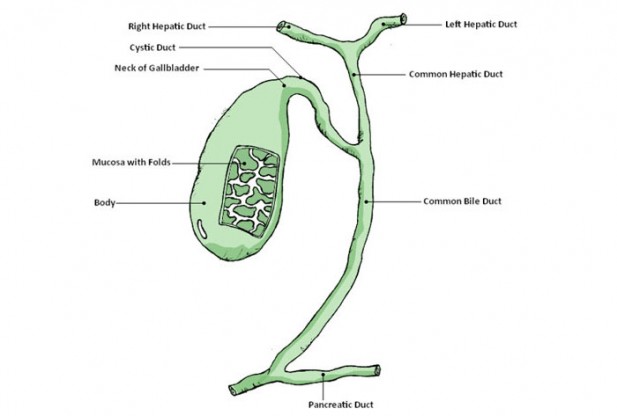
What is Gall Bladder?
The gall bladder is the sac-shaped organ that is the passage between the liver and intestine where bile is held.
Formation and Orientation
The gall bladder is relatively 8 cm by 4 cm when fully formed. The gallbladder is angled between the rectus abdominis muscle and the costal margin. It is hollow and is made up of three parts; the fundus, the body and the neck.
The fundus is the part of the gallbladder that is most far from the cystic duct. This is at the same level of the transpyloric plane and covers the peritoneum. The body of the gallbladder is that is located between the fundus and neck. This part is also located underneath the liver and the abdomen and is also attached to the liver. The neck is the final part of the gallbladder that is closest to the cystic duct. It is also connected to the biliary tree from the cystic duct and combines with the common hepatic duct to make up the common bile duct.
There are five different layers of the gallbladder, none of which include muscularis mucosae like many organs. The layers include:
- the serosa
- the perimuscular fibrous tissue
- the muscularis
- the lamina propria
- the epithelium.
The serosa is the outermost layer of the gallbladder that attaches to the lining of the abdominal cavity, the peritoneum. The perimuscular fibrous tissue is a layer of connective tissue that is located around the muscle. The muscularis is the layer of the organ that is responsible for the contraction of the gall bladder which helps to release bile when contracted. The lamina propria is connective tissue that combines with the innermost layer, the epithelium, to form the mucosa.
Function
The gallbladder releases bile into the duodenum when food enters the digestive tract. The bile is produced in the lover but is transported to the tract by the gallbladder. The bile is also intensified in the gallbladder because it becomes stronger and more effective on the breakdown of fats.
It has been projected that the gallbladder excretes insulin and other pancreatic hormones.
Image Caption: Gross Gallbladder anatomy and local ducts. Credit: LukesAnatomy/Wikipedia (CC BY-SA 3.0












